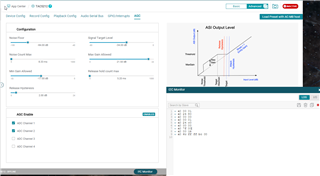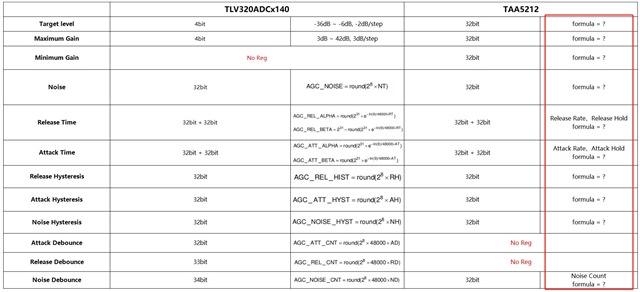Other Parts Discussed in Thread: TAC5212
Tool/software:
Hi,
Regarding TAA5212, there are some differences in terms of AGC setting register, in which AGC max gain register is 4-bit (on the left figure) and 32-bit (on the right figure). Which version should customer follow?
Besides that, do we have any application note or user guide to configure and use AGC setting?
Thanks.





